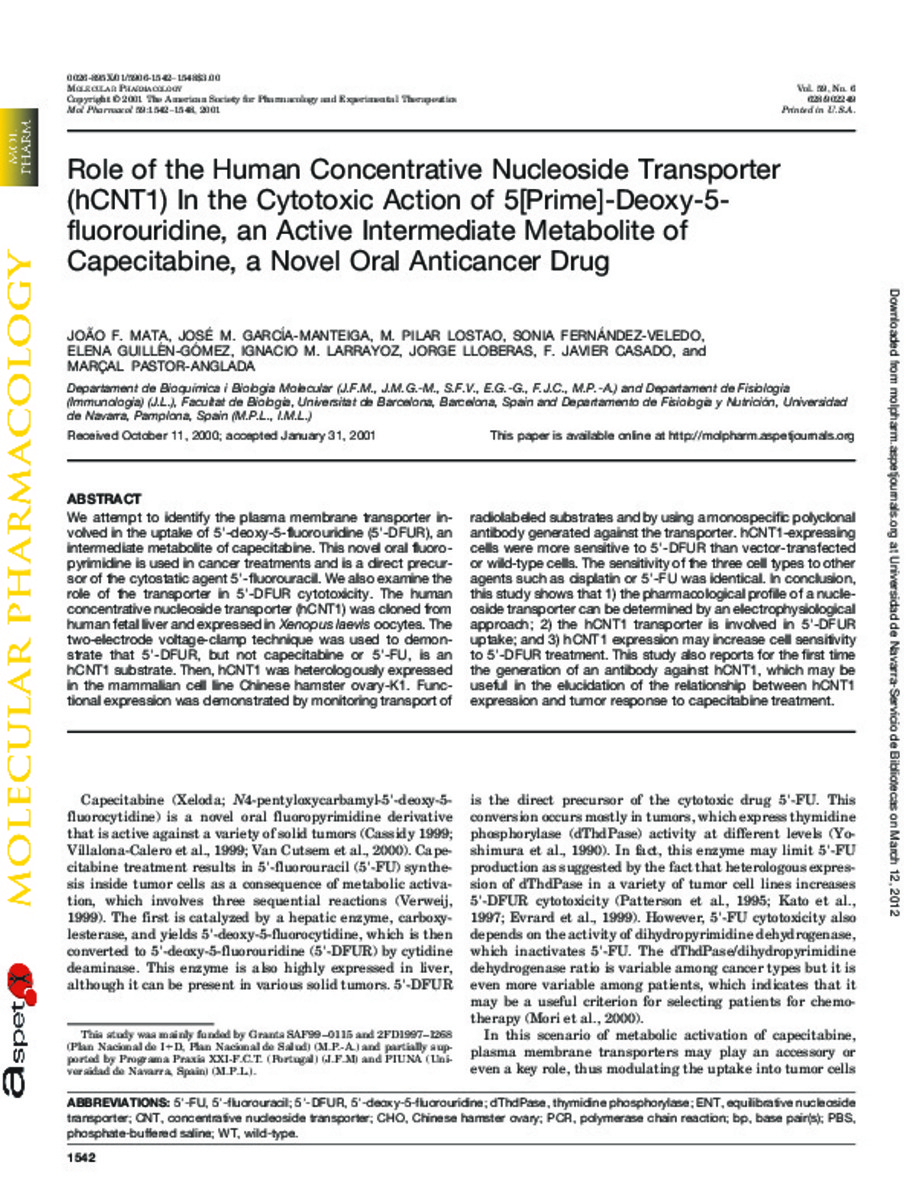Role of the human concentrative nucleoside transporter (hCNT1) in the cytotoxic action of 5[Prime]-deoxy-5-fluorouridine, an active intermediate metabolite of capecitabine, a novel oral anticancer drug.
Keywords:
Xenopus-Laevis oocytes
Thymidine phosphorylase
Colorectal cancer
B-Lymphocytes
Cells
5'-deoxy-5-fluorouridine
Tumors
Liver
Publisher:
American Society for Pharmacology and Experimental Therapeutics
Citation:
Mata JF, Garcia-Manteiga JM, Lostao MP, Fernandez-Veledo S, Guillen-Gomez E, Larrayoz IM, et al. Role of the human concentrative nucleoside transporter (hCNT1) in the cytotoxic action of 5[prime]-deoxy-5-fluorouridine, an active intermediate metabolite of capecitabine, a novel oral anticancer drug. Mol Pharmacol. 2001 Jun;59(6):1542-8.
Statistics and impact
0 citas en

0 citas en

Items in Dadun are protected by copyright, with all rights reserved, unless otherwise indicated.







